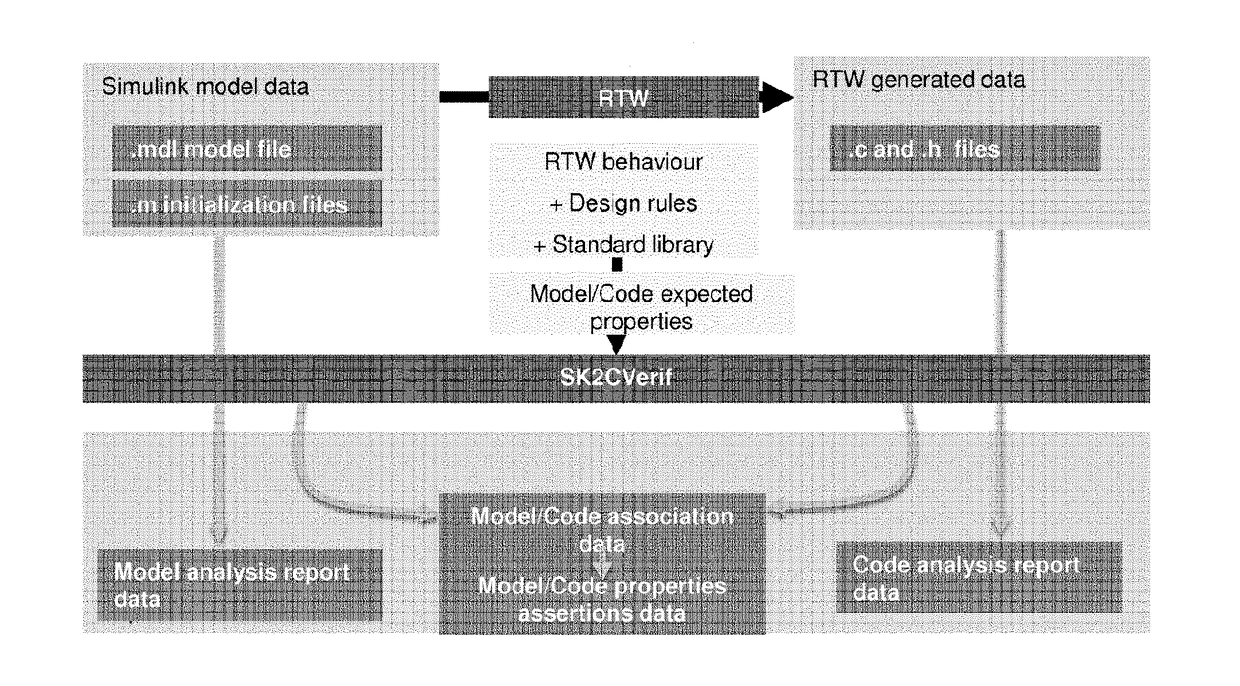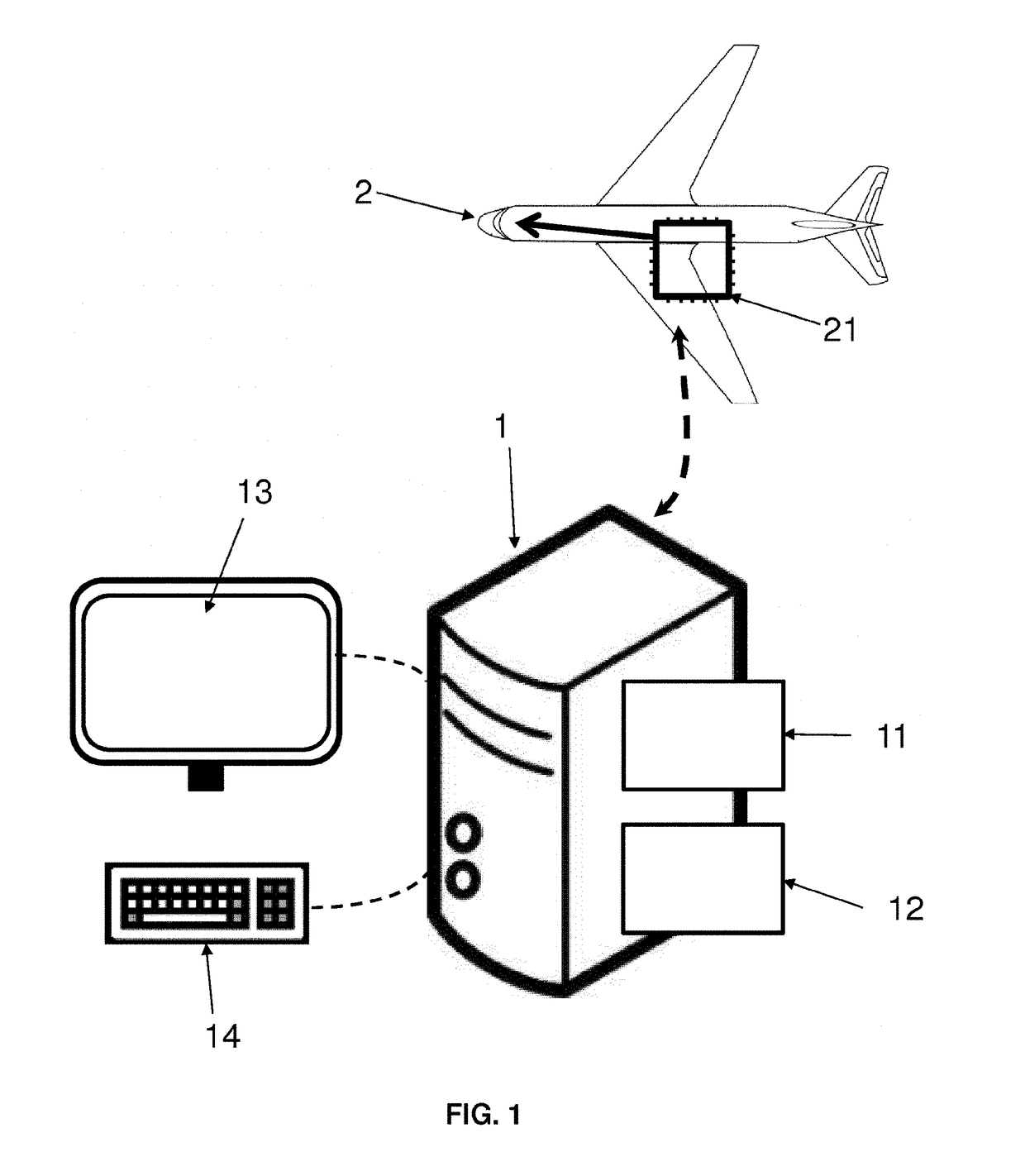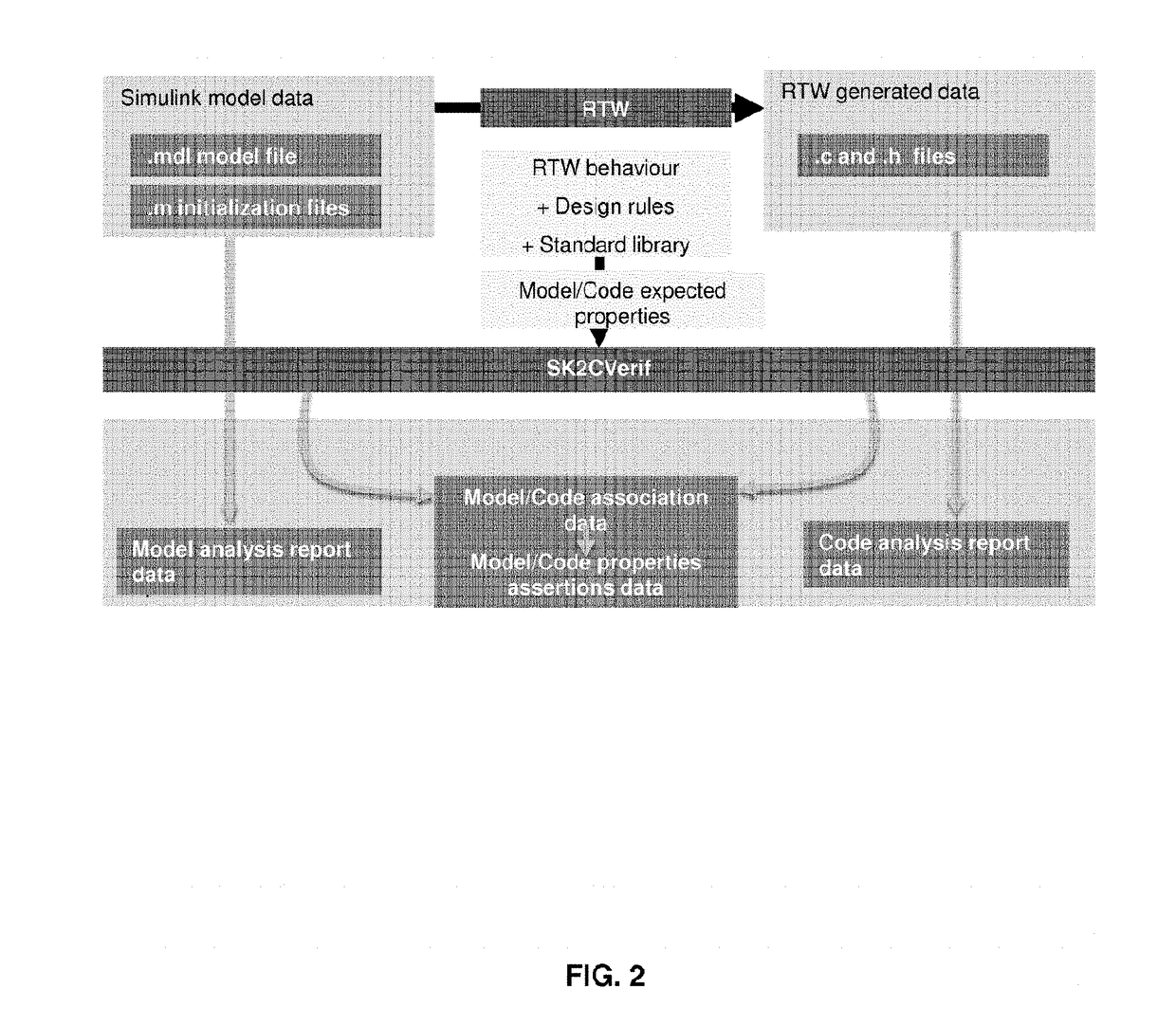Method for verifying traceability of first instructions in a procedural programming language generated from second instructions in a modelling language
a programming language and traceability technology, applied in the direction of program control, program code transformation, specific program execution arrangements, etc., can solve the problems of undesirable functional behaviour, inability to guarantee to users, and inability to detect non-traceable instructions
- Summary
- Abstract
- Description
- Claims
- Application Information
AI Technical Summary
Benefits of technology
Problems solved by technology
Method used
Image
Examples
Embodiment Construction
Architecture
[0045]With reference to FIG. 1, the present method is a method for verifying traceability of first code instructions in a procedural programming language produced from second code instructions in a modelling language.
[0046]The method is applied via a piece of equipment 1 which may be any computer station comprising data processing means 11 (for example a processor), data storage means 12 (for example a hard disk) and means for displaying a graphic interface 13 (for example a screen).
[0047]Input means 14 (such as a keyboard and a mouse) give the possibility to a user who wishes to use the method (and / or graphically program) for interacting with the graphic interface 13. It should be noted that the present method is not limited to the use of a workstation, and that other types of pieces of equipment such as a server may be used altogether.
[0048]By procedural (or algorithmic) programing is meant a programming paradigm in which a “procedure” simply contains a series of steps...
PUM
 Login to View More
Login to View More Abstract
Description
Claims
Application Information
 Login to View More
Login to View More - R&D
- Intellectual Property
- Life Sciences
- Materials
- Tech Scout
- Unparalleled Data Quality
- Higher Quality Content
- 60% Fewer Hallucinations
Browse by: Latest US Patents, China's latest patents, Technical Efficacy Thesaurus, Application Domain, Technology Topic, Popular Technical Reports.
© 2025 PatSnap. All rights reserved.Legal|Privacy policy|Modern Slavery Act Transparency Statement|Sitemap|About US| Contact US: help@patsnap.com



